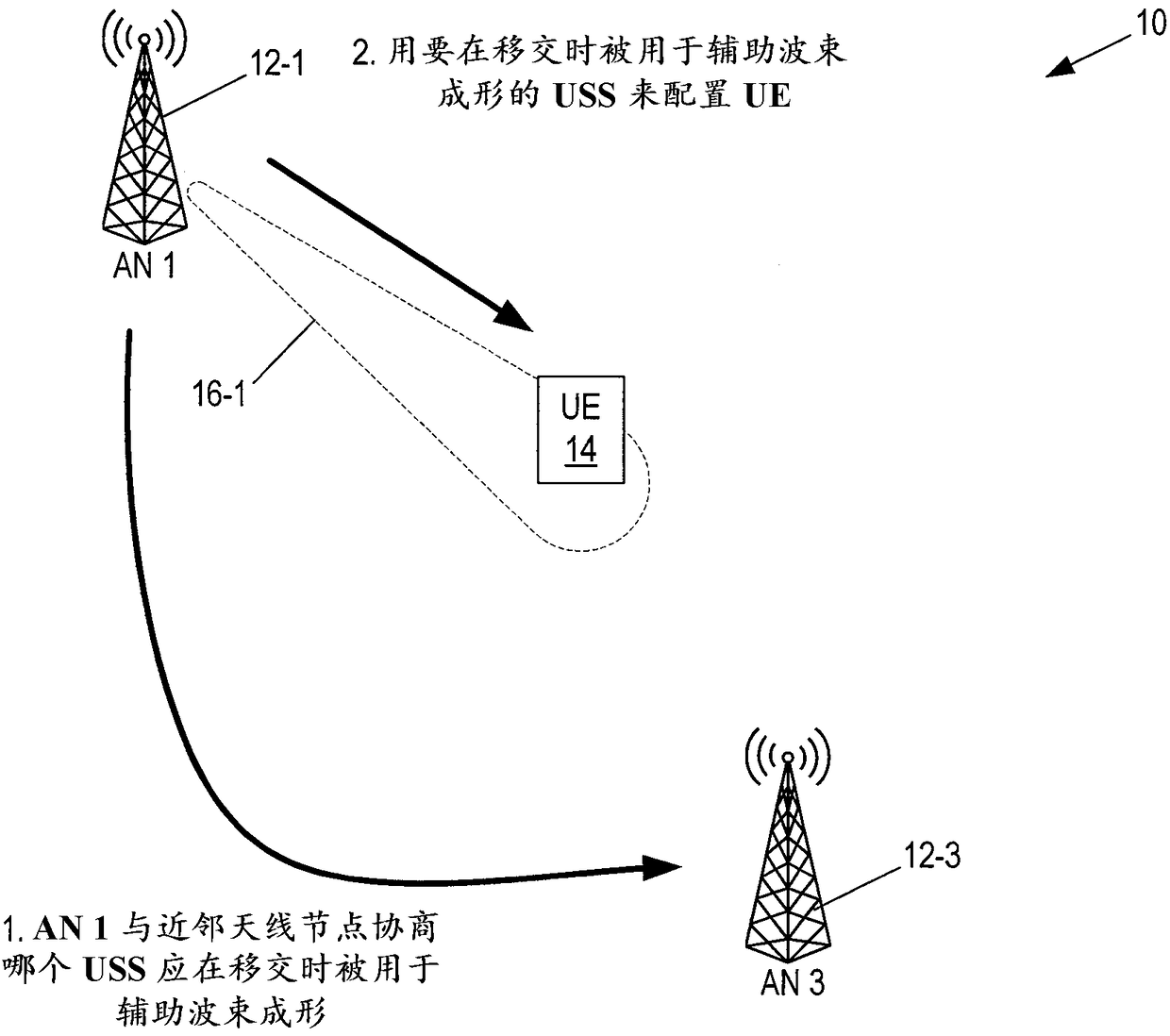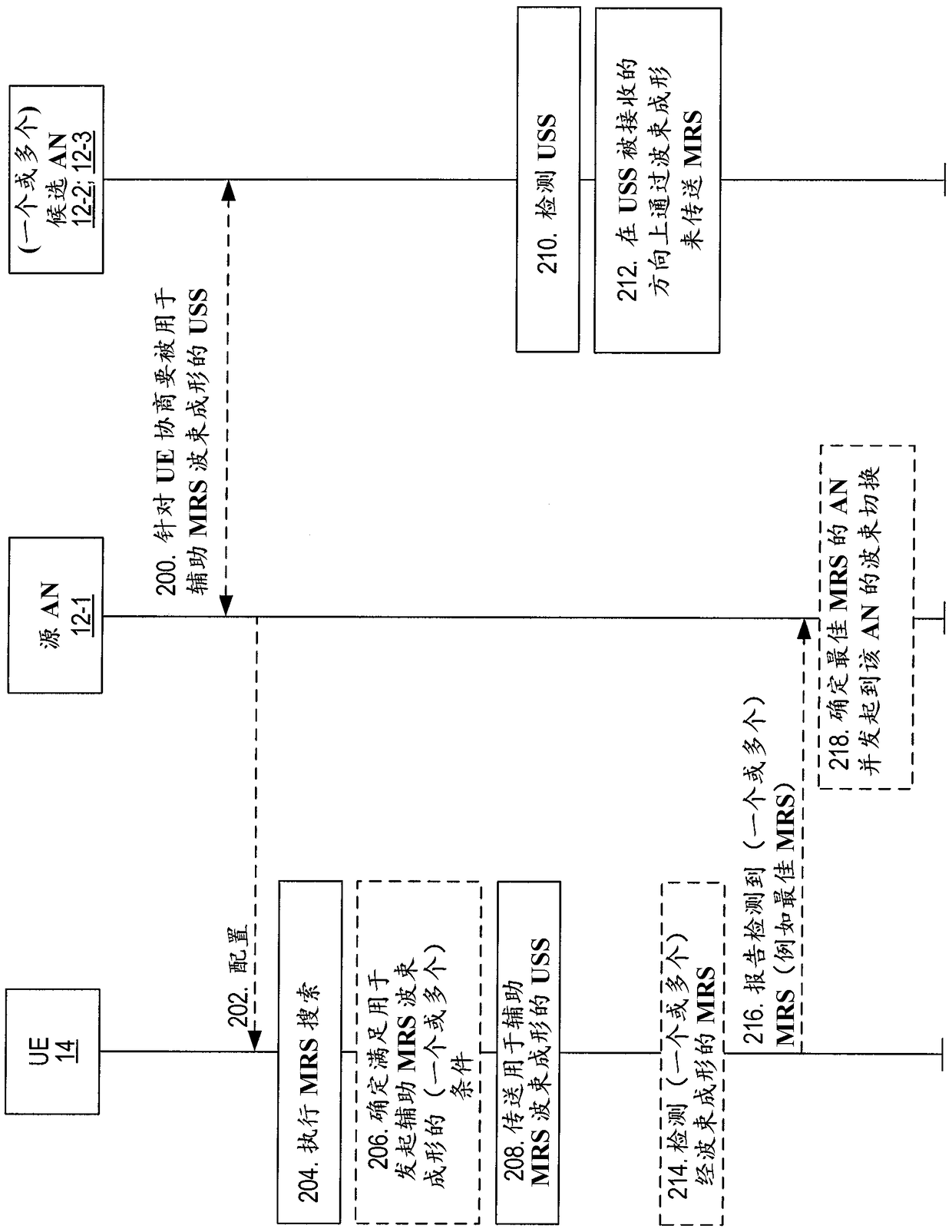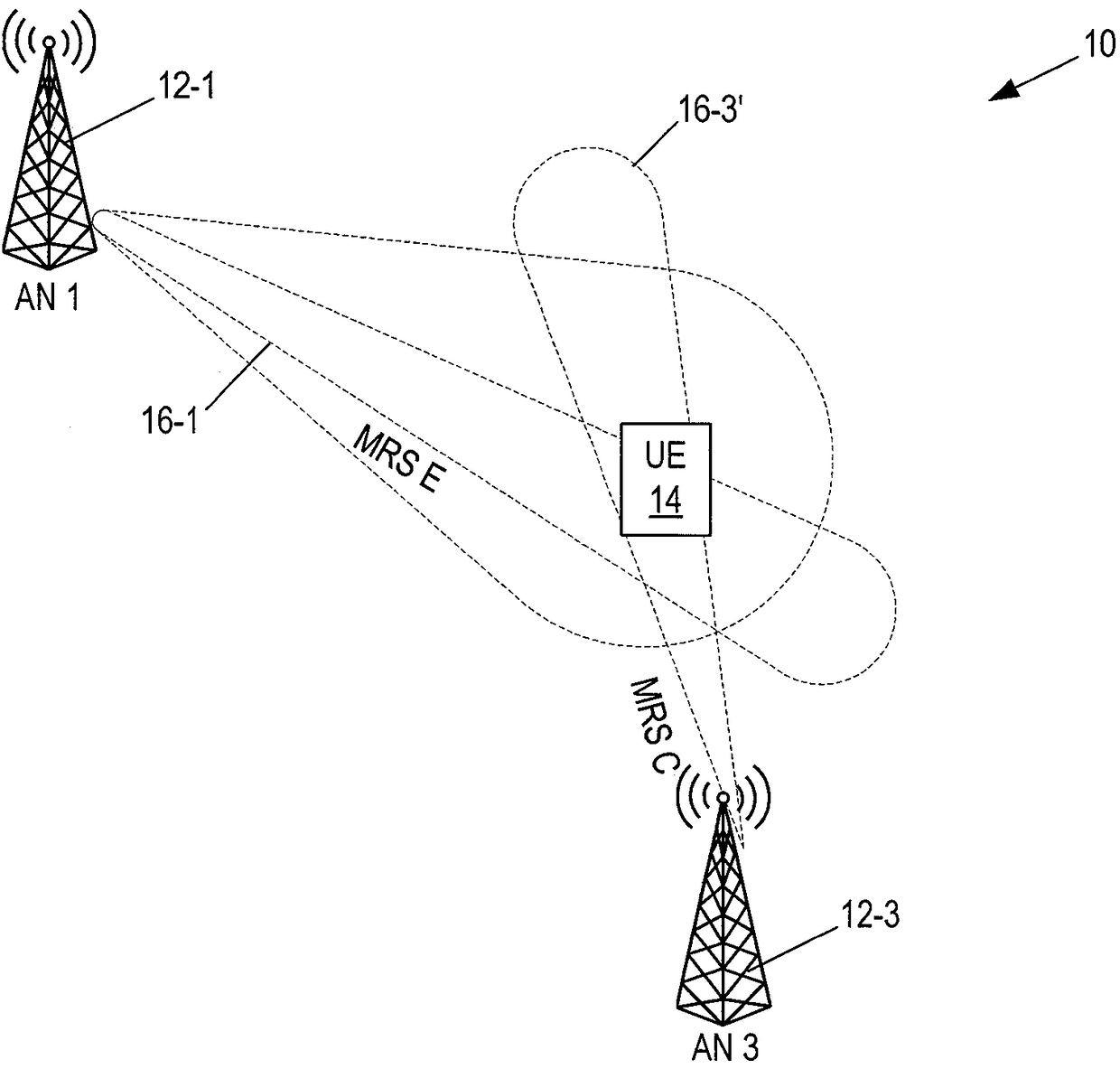Assisted beamforming at mobility
A beamforming and mobility technology used in the field of beam switching
- Summary
- Abstract
- Description
- Claims
- Application Information
AI Technical Summary
Problems solved by technology
Method used
Image
Examples
Embodiment Construction
[0051] The embodiments set forth below represent information to enable those skilled in the art to practice the embodiments and illustrate the best modes for practicing the embodiments. Upon reading the following description in light of the accompanying drawing figures, those skilled in the art will understand the concepts of the disclosure and will recognize applications of these concepts not specifically addressed herein. It should be understood that these concepts and applications fall within the scope of this disclosure and the appended claims.
[0052] Antenna Node (AN): As used herein, an "antenna node" or "AN" is a unit capable of generating one or more beams covering a particular area or direction. The AN can be a base station, or a part of a base station.
[0053] User Equipment (UE): As used herein, a "UE" is any type of wireless device that has access to (i.e. is served by) a cellular communication network by wirelessly transmitting and / or receiving signals to an A...
PUM
 Login to View More
Login to View More Abstract
Description
Claims
Application Information
 Login to View More
Login to View More - Generate Ideas
- Intellectual Property
- Life Sciences
- Materials
- Tech Scout
- Unparalleled Data Quality
- Higher Quality Content
- 60% Fewer Hallucinations
Browse by: Latest US Patents, China's latest patents, Technical Efficacy Thesaurus, Application Domain, Technology Topic, Popular Technical Reports.
© 2025 PatSnap. All rights reserved.Legal|Privacy policy|Modern Slavery Act Transparency Statement|Sitemap|About US| Contact US: help@patsnap.com



